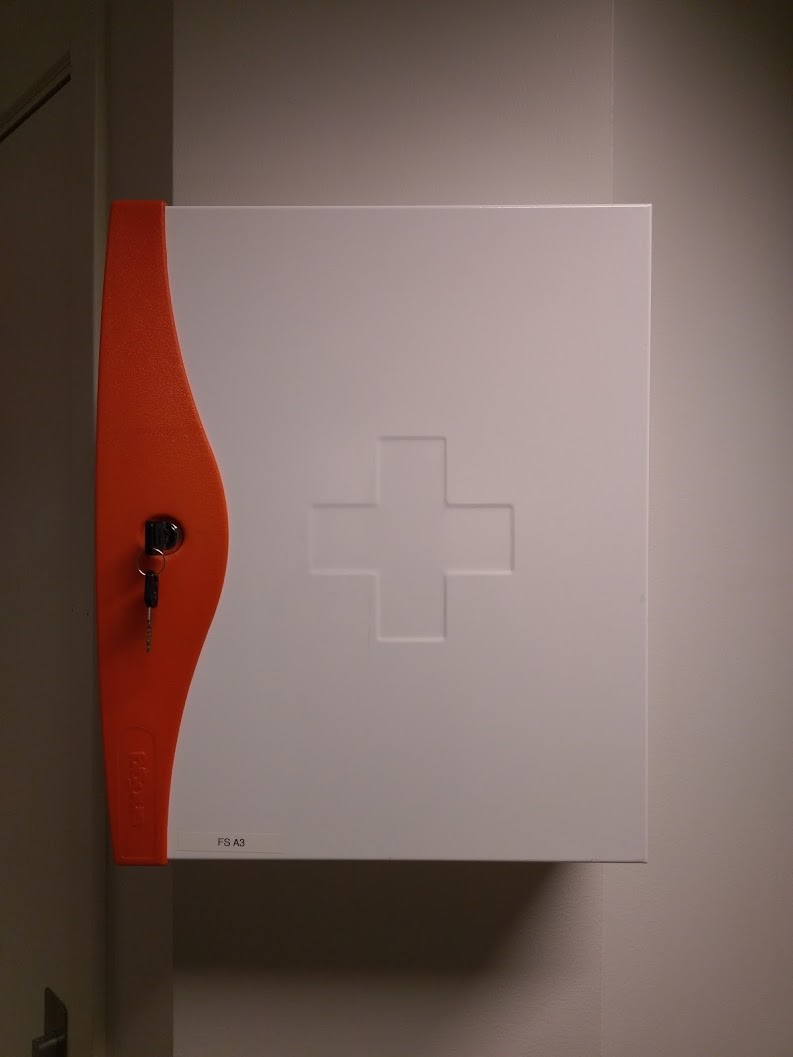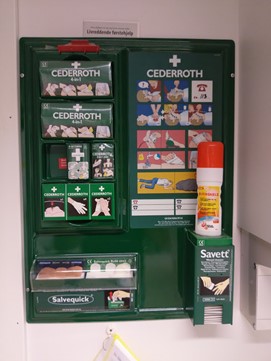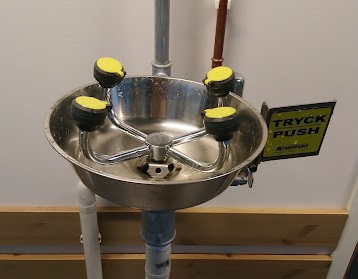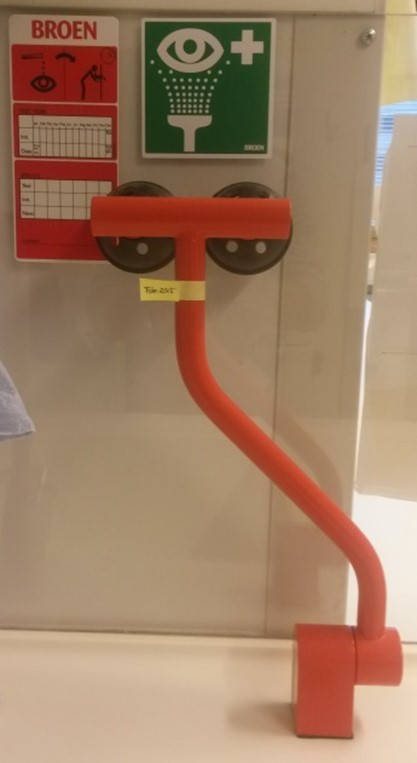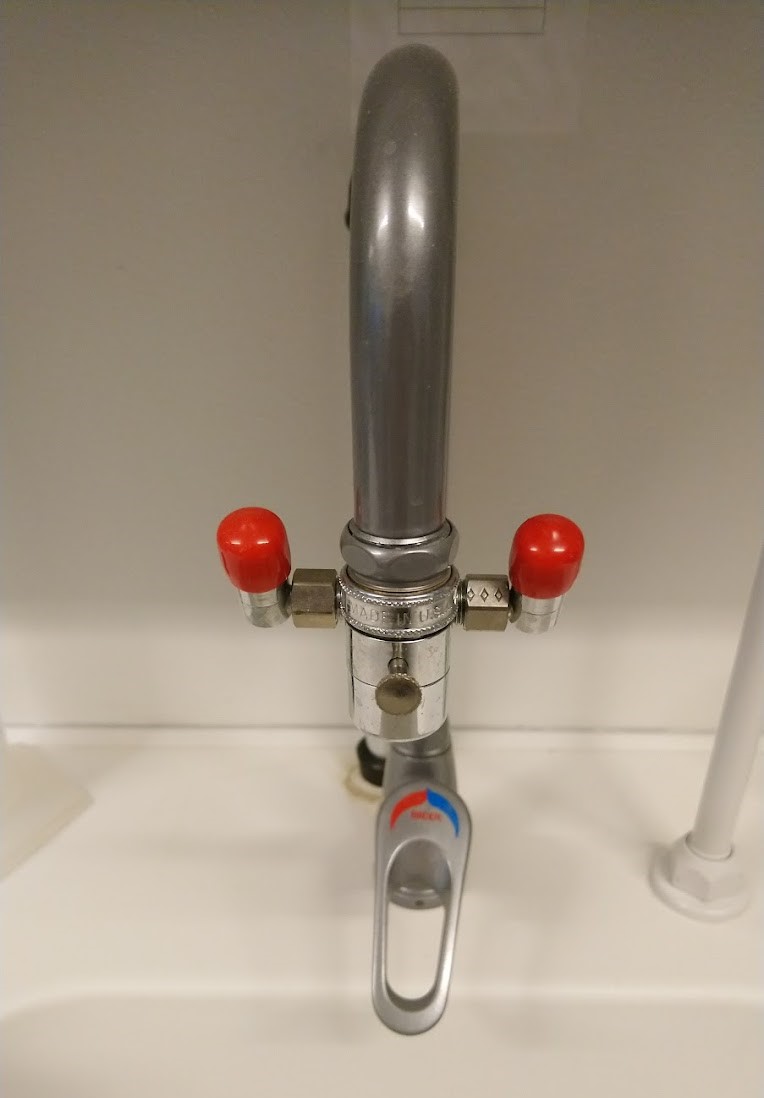Whenever your work involves manipulation of chemicals, solutions, samples of known or unknown origin, it is advised to evaluate the risks in advance. Check for pictograms (see section 3), look at the safety datasheet (MSDS) for info regarding hazards and choose the equipment that will protect you best and at all times.
Labcoats: labcoats have several purposes when working at the lab. They help you stay clean and decrease the chance for stains or spills on your clothes, and reduce the risk of contaminating your samples, surroundings and coworkers with external (biological or chemical) factors such as pathogens, dust, particles, etc. Labcoats are often seen as the minimal requirement for working in a laboratory. They should be worn when entering and taken off when leaving the lab.
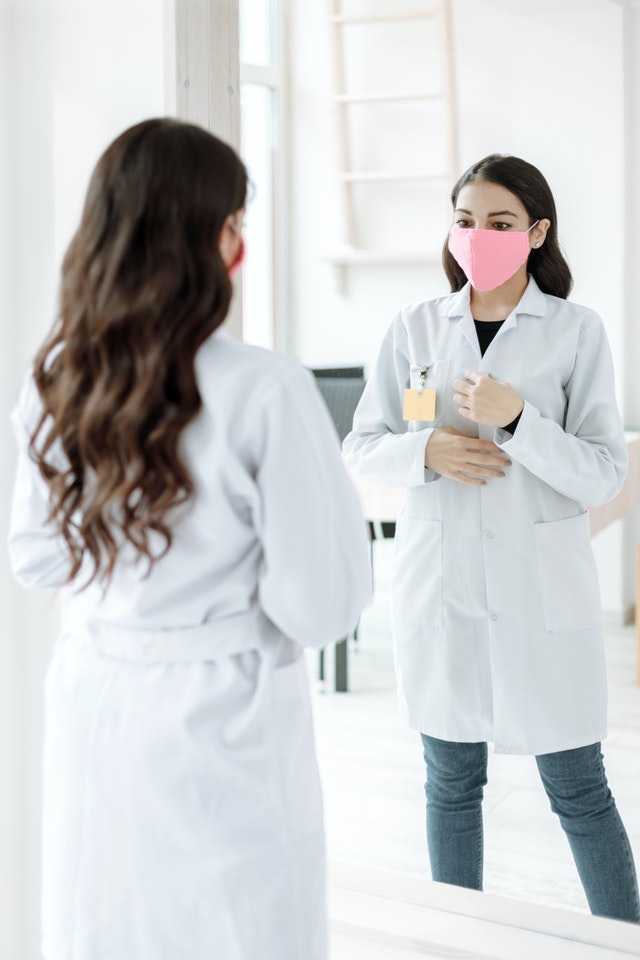
Gloves: gloves will help protecting your hands and skin against various types of chemical hazard or protect your samples from contamination. Depending on their specification, they may protect against corrosive agents, staining solutions, acidic and alkaline solutions which may induce burns, and exposure to carcinogenic compounds. Remember to use the correct glove for a given task. See HSE-gateway and BIO’s HSE-handbook for correct use of gloves. Only use gloves when needed.
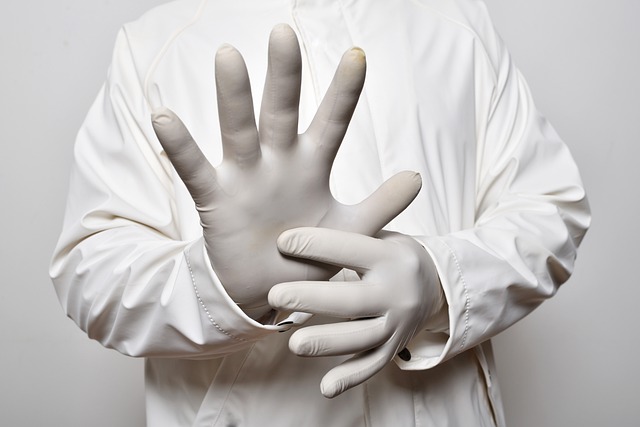
Goggles: safety goggles protect your eyes and parts of your face against projections of liquids which properties might compromise your vision and damage your skin. They must be used when manipulating organic solvents, acidic/alkaline solutions, hot solutions, detergents and in situations where splashes and projections of particles are likely to occur.
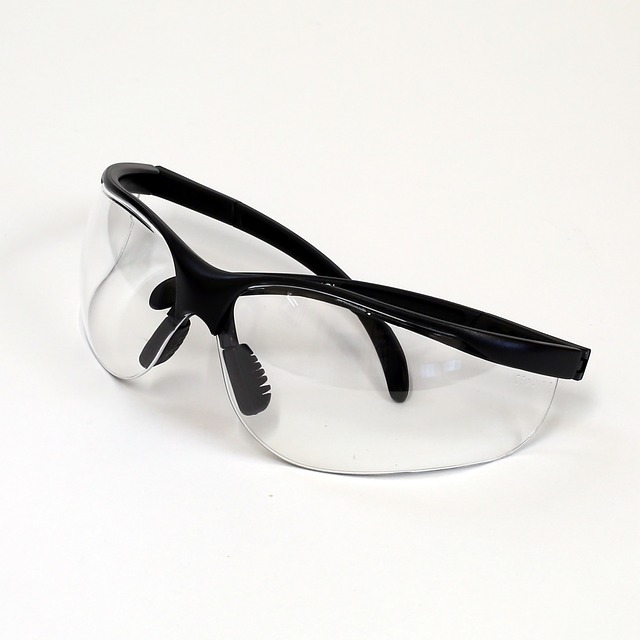
Masks: masks protect your respiratory system against dust and particles. They are particularly useful when manipulating volatile powder, but not all types help against gas and fumes. When working with animals (rats, mice), they reduce occurrence of allergic reactions. Note that several mask/filter types exists; not all of them are equally efficient in all situations. Make sure that the type that you use is suitable with for the procedure that you are about to perform.
Read more about respiratory protective equipment here.
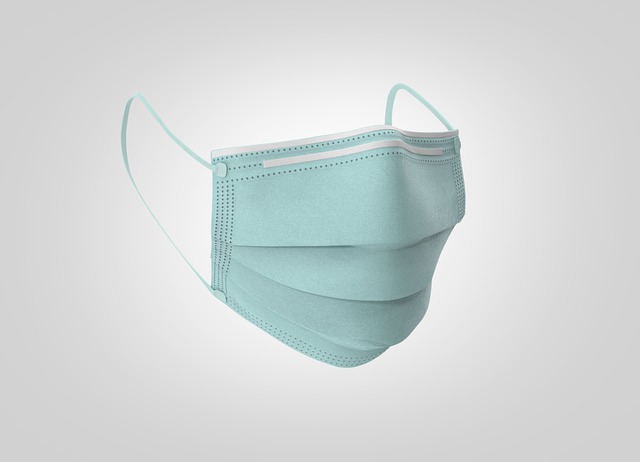
Ventilated cabinets: Ventilated cabinets (fume hoods) allow you to manipulate hazardous chemicals (liquid, fumes, powder) in a safe way. It is recommended to use them as much as possible, when technically possible. At BIO, the air flow in the ventilated cabinets is automatically modulated.
Read more about fume hoods here.
Be aware that the flow is reduced during weekends and outside of regular working hours (check schedules here).
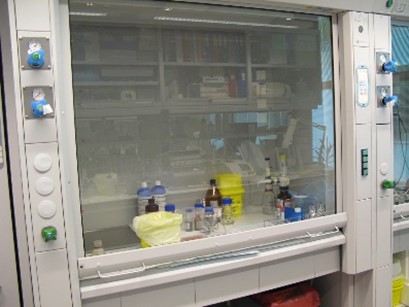
LAF benches: A special type of hoods called LAF-bench is designed to protect the content of the cabinet (cell culture, sterile preparations, etc.) from outside contamination, but not all LAF-benches do protect the user simultaneously. Do not hesitate to ask for help when unsure about hoods and safety.
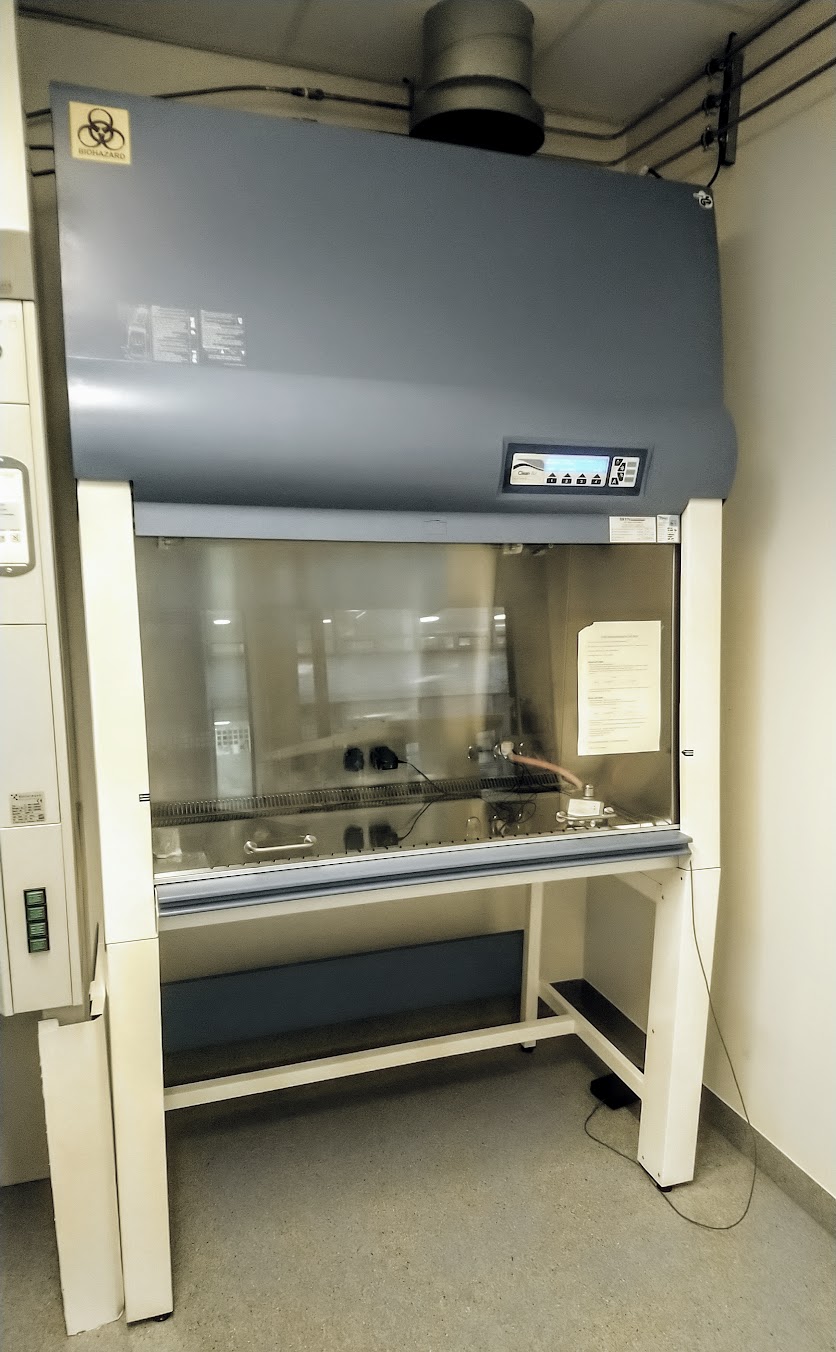
In case of minor injuries
You will find first aid kits and cabinets near or in the laboratories. They usually contain first aid items such as bandages, tape, small, medium and large sterile gauze dressings, scissors, plasters, etc. These items will help in case of small injuries such as cuts, burns, bleeding, etc.
At “Biologen” (Thormøhlensgate 53A/B), the first aid kits are orange and white, and closed, as depicted below to the left. At the BIO-building at HiB (Thormøhlensgate 55), the First Aid kits are green and open, as depicted below to the right.
In case of exposure to hazardous chemicals
Learn to recognize and use the emergency showers and eyewash stations! At BIO, the emergency showers are often combined with an eyewash station and may be found in corridors near the labs. Both eyewash stations and emergency showers are critical to your health as they will help flushing spills of dangerous (corrosive, burning, carcinogenic) chemicals away from your body, head and eyes.
Emergency showers: emergency showers may be found directly inside the lab where you work (i.e. in the BIO-building/HiB - Thormøhlensgate 55, but also in the corridor that leads to your lab (i.e. at Biologen - Thormøhlensgate 53A/B).
Whenever needed, pull the chain to open the flow of water. Remain under the shower for 5-20 minutes depending on the properties of the chemical and the degree of exposure. It is strongly advised to remove clothes that have been exposed to chemicals to minimize the risk of skin damage and contamination.
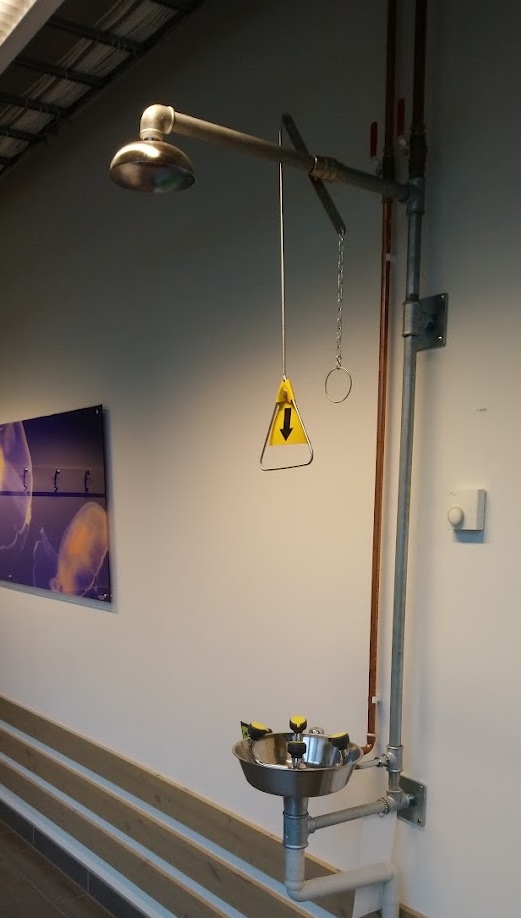
Demo-video by NMBU
Eyewash stations: they are found on emergency showers, but also on/nearby water taps and sinks. Use them when dangerous liquid projections have reached the eyes. Open the tap and push/pull the button to open the flow of water. Flush for 5-20 minutes depending on the properties of the chemical and the degree of exposure. Different types of eyewash stations are available at BIO. Some are specific to the BIO-building (Thormøhlensgate 55), some are specific to “Biologen” (Thormøhlensgate 53A/B). Check carefully which type is available in the lab that you will use, and learn how to use it properly.
Demo-video by NMBU

